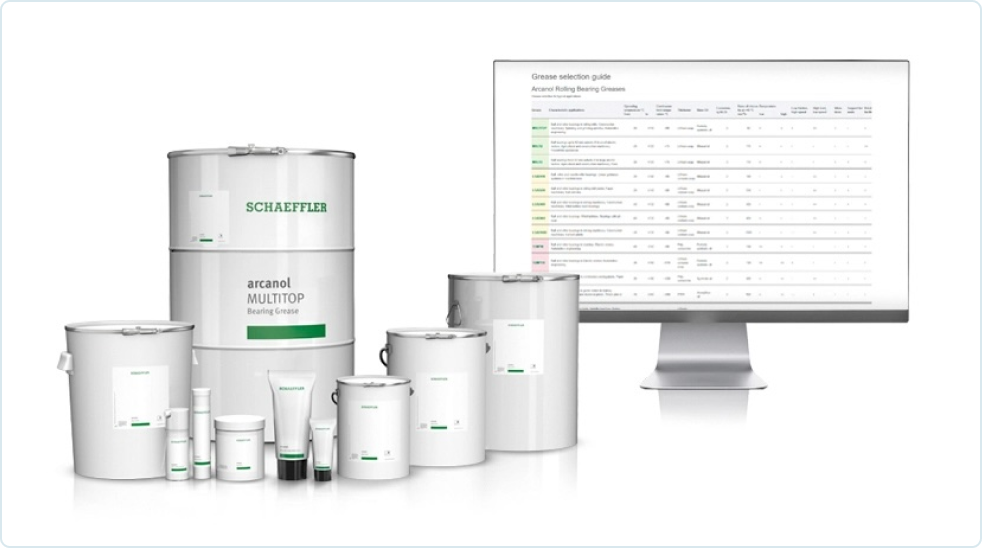
What is Tribology and How it Relates to Ball and Roller Bearings
Tribology is a term that came about in 1966 by Peter Jost dealing with wear, friction and lubrication however the concept had been understood for thousands of years prior. The earliest mention of tribology is from the Bible when a reference is made about Noah building the Ark and sealing it internally and externally with asphalt/bitumen.
Bearings are all about wear, friction and lubrication so the terminology describing Tribology are one and the same. It is important to understand all the factors concerning Tribology in bearings.
Wear may be influenced by external forces and or internal design features and lubrication issues. Bearing race material, cage type, Internal clearance, fits, shields, seals, internal geometry for raceways, preloads, and lubrication all combine to create the dynamic of a rolling bearing. So the term Tribology in bearings involves more analysis than just lubrication as it involves careful design and testing to yield the best result.

Demonstrates Egyptians used animal fats (tallow) to lubricate chariot axles. This is a good way to understand the science of Tribology where friction is mitigated with the use of lubrication.
Good rolling contact is a requirement when it comes to rolling bearings however contact between two surfaces should be minimal because contact leads to friction. The goal of Tribology is to find optimal methods to eliminate friction and thus reduce wear so that everything operates smoothly.
INA and FAG Bearing Companies have a great deal of expertise in rolling bearing lubrication. Pacific International Bearing Company gives its customers expert advice in the selection of the right lubricant for any application. It is possible If no suitable lubricant can be found, we can test new lubricants for you. Bearing Companies like INA and FAG actually have Tribology departments which work to create new grease or oil blends to find suitable results for almost any environment or application.
For customers who have very specific operation requirements for smoothness, we can determine which oil or grease has the right application characteristics. When your requirements include a predetermined service life we can assist in estimating it based on certain lubrication properties. Tribology like many disciplines must be aware of the need for environmental concerns and so the use of biodegradable lubricants is available in many cases.
More About Tribology in Bearings
The pervasive use of ball and roller bearings is because it is proven that rolling friction is less than sliding friction. Friction is a combination of issues involving material where limits of elasticity exist. Loads acting on the bearing can cause deformation and compression causing increased friction. It is known that the relation between load and deformation is not the same when the load is increasing compared to it decreasing even when the limit of elasticity of the material is not exceeded. When the load increases, a given deformation corresponds to higher stress than when the load declines. Here elastic hysteresis exists analogous to the magnetic hysteresis in the science of electricity.
Friction within bearings is a key factor that affects operational efficiency and energy consumption. Design strategies aim to optimize the frictional characteristics to balance force transmission and minimize energy losses.
Pacific International offers Name brand ball bearings from stock like SKF, FAG, INA, TPI and NMB. Visit our website to select sizes, download PDFs and order samples.
PIB offers the 6000, and 6200 series bearings, such as TPI bearing part number 6203-LLU or 6203-LLB for reducing friction through seal type selection. TPI ball bearings are specifically designed to manage friction effectively. These bearings meet the standard for a super surface finish and use specialized lubricants to achieve a lower friction coefficient, which directly contributes to their enhanced performance and life. Learn more about this quality high value bearing brand.
Wear mechanisms and service life management in bearings
No bearing will have an unlimited service life. However, life can be extended through good practices for design and maintenance where possible. If a bearing is exposed to moisture or dirt in its operating environment it may rust or wear prematurely. If the bearing can be properly protected with a good seal design and proper lubrication and handling then its life can be extended.
Fatigue
The remaining issues for the bearing include fatigue from the material due to repeated stresses under rotation. Bearing wear is a critical area affected by tribological principles. Fatigue wear can significantly not only reduce life but also affect the bearing’s performance.
Handling of bearings
Another often overlooked area of Tribological consideration is the influence of mounting and dismounting procedures that will affect performance and life.
For given operating conditions there exist multiple options for design, mounting, and assembly. The assembler must be able to perform installation without difficulty and not damage the bearings. A bearing improperly handled and installed will increase its failure potential.
The importance of fits
Continuing with the thought on what causes bearing to fail would be Fits. To achieve proper bearing function the fit between the inner ring and shaft and the outer ring and housing must be calculated for each application. Operating conditions determine the choice of fit. For any given application the direction of the load in relation to the bearing ring is of the greatest importance.
Tribological Calculations in Bearing Design
These calculations involve assessing the interactions between surfaces in motion, specifically focusing on friction, wear, and lubrication dynamics.
Film thickness and lubrication regime
One of the key aspects of tribological calculations in bearings is determining the lubrication regime, which is dependent on the lubricant film thickness relative to the surface roughness of the contacting parts. The lubrication regime can be categorized into three main types:
- Hydrodynamic lubrication
This occurs when the lubricant film completely separates the contact surfaces under load, preventing direct metal-to-metal contact.
- Mixed lubrication
Characterized by partial contact between the asperities of the surface and the lubricant film.
- Boundary lubrication
This occurs when the film thickness is insufficient to separate the surfaces, and the friction and wear are controlled by the properties of the surface layers.
The λ ratio (Lambda ratio) is a critical parameter used to determine the lubrication regime. It is defined as the ratio of the lubricant film thickness (ℎ) to the combined surface roughness of the bearing surfaces (σ). The formula to calculate the λ ratio is:

Where:
- ℎ = lubricant film thickness
- σ = combined surface roughness of the contact surfaces
Example Calculation:
Suppose a ball bearing operates with a lubricant film thickness of 0.5 micrometers and the combined surface roughness of the rolling elements and raceways is 0.1 micrometers. The λ ratio would be:

A λ ratio greater than 3 typically indicates hydrodynamic lubrication, ensuring minimal wear and friction.
Contact pressure and load capacity
The contact pressure between the rolling elements and raceways significantly affects bearing life and performance. The Hertzian contact theory is often applied to calculate the contact pressure in ball and roller bearings. The maximum contact pressure (p max ) for point contact in ball bearings can be estimated using the formula:

Where:
- E = modulus of elasticity of the bearing material
- W = applied load
- d = diameter of the ball
- ν = Poisson’s ratio of the bearing material
Wear rate calculation
The wear rate of a bearing is also an important consideration, particularly in determining the service life and maintenance intervals. The wear rate (WR ) can be approximated using Archard’s wear equation:

Where:
- k = wear coefficient
- W = normal load
- H = hardness of the softer contact surface
- v = sliding velocity
These tribological calculations are integral to the design and selection of bearings, allowing engineers to predict the operational characteristics and optimize the bearing for specific applications.
Fatigue and Surface Failure
Rolling bearings are subject to two primary modes of failure: Hertzian fatigue, which originates below the surface of contact areas, and surface-initiated failure, driven by poor lubrication or contamination. Each failure mode requires distinct design considerations and calculations to predict and mitigate risks effectively.
Hertzian fatigue occurs as a result of repeated stress cycles in the subsurface regions of the contact zone between rolling elements and raceways. The primary cause is the highly localized nature of contact forces, leading to stress concentrations.
- Stress distribution:
Unlike surface wear, the maximum shear stress in a bearing contact does not occur at the surface but is slightly below it. This is due to the elastic deformation of both the rolling element and the raceway under load, creating a stress field beneath the surface. - Failure propagation:
Over time, these subsurface stresses initiate micro-cracks in the steel matrix, typically at inclusions or other material discontinuities. As these cracks propagate toward the surface, they eventually cause material fragments to detach, creating spalls. This phenomenon is visually comparable to the formation of potholes on a road surface under cyclic loading. - Material considerations:
To minimize the likelihood of Hertzian fatigue, manufacturers use ultra-clean steels as specified in ISO 683-17. These materials have extremely low oxygen and impurity levels, reducing the presence of inclusions that act as stress risers. Additionally, high-quality heat treatments are applied to enhance the material’s resistance to cyclic loading.
Design strategies to address Hertzian fatigue:
- Optimize bearing geometry, such as increasing the size or modifying the profile of rolling elements, to reduce localized stress.
- Use steels with high purity and specific heat treatments to improve fatigue resistance.
- Distribute loads across multiple rolling elements to avoid excessive stress on individual components.
Surface-initiated failure is distinct from Hertzian fatigue in that it originates at the surface of the contact zone rather than below it. The primary causes are insufficient lubrication and contamination.
- Lubrication breakdown:
Bearings rely on a thin film of lubricant to separate rolling elements from raceways, preventing direct metal-to-metal contact. If the lubricant degrades due to high temperatures, oxidation, or insufficient viscosity, this film can break down, leading to increased friction and wear. - Role of contamination:
Contaminants such as dirt, debris, or moisture introduced into the lubrication system can create abrasive interactions. These particles damage the raceways and rolling elements, accelerating surface wear and eventually leading to premature failure.
Surface-initiated failures can occur rapidly under poor operating conditions, often before subsurface fatigue becomes a concern. This makes it imperative to ensure proper lubrication and sealing mechanisms, especially in demanding applications.
Design strategies to mitigate surface-initiated failure:
High-performance lubricants: Use lubricants specifically formulated for the expected temperature, load, and speed conditions.
Effective sealing: Design seals to prevent the ingress of contaminants into the bearing assembly.
Regular maintenance: Monitor lubricant condition and replace or replenish it as needed to maintain optimal performance.
The fatigue load limit represents the maximum stress that a bearing can endure without initiating fatigue failures. This value provides a safety threshold, particularly for applications with high static or shock loads.
For ball bearings:
The fatigue load limit is calculated as the static radial load capacity divided by 22:
Lfatigue =C0R22
For roller bearings:
Roller bearings, due to their larger contact areas, have a higher fatigue load limit. The calculation uses a divisor of 8.2:
Lfatigue =C0R8.2
Applications and implications:
Understanding and incorporating the fatigue load limit into the design process is essential for systems exposed to irregular loading conditions:
- In transmissions, torque surges during acceleration or deceleration can cause stress spikes that approach or exceed fatigue limits.
- Vehicles or machinery operating on uneven terrain experience transient shock loads, necessitating robust fatigue calculations.
Key steps for managing fatigue load limits:
- Calculate the combined effects of radial and axial loads under operating conditions.
- Ensure the material properties and bearing geometry support the anticipated load cycles.
- Incorporate features to reduce the impact of transient loads, such as dampers or resilient mounting systems.
An integrated approach to failure prevention
Addressing Hertzian fatigue and surface-initiated failure requires a comprehensive design strategy incorporating material science, lubrication technology, and load analysis. By combining these approaches, engineers can create bearings that perform reliably across diverse applications, from high-speed machinery to heavy-duty industrial systems.
- Regular inspections and proactive lubrication management are essential to prevent fatigue and surface failures.
- Use standards like BS ISO 281 to incorporate real-world load and environmental factors into bearing calculations.
- Leverage the latest material developments, including ceramic rolling elements or high-temperature steels, for enhanced performance.
By applying these principles, bearing designs can achieve the optimal balance between performance, durability, and reliability in even the most demanding conditions.
Speed and Thermal Considerations
When designing rolling bearings, two critical parameters — limiting speed and thermal rating — must be carefully evaluated. These factors establish the operational boundaries of a bearing and determine its capability to perform under high rotational speeds and elevated temperatures without compromising reliability. A clear understanding of these parameters enables engineers to design systems that optimize both performance and lifespan.
The limiting speed of a bearing is the highest rotational speed it can achieve while maintaining safe operating conditions. This speed is constrained by factors such as internal friction, heat generation, lubrication, and the material properties of the bearing components.
Engineers quantify the speed capability of a bearing using the DN factor, calculated as:
- DN= Mean Diameter (mm)×Rotational Speed (RPM)
The mean diameter is given by:
- Mean Diameter = Bore Diameter+Outer Diameter2
This semi-non-dimensional measure allows for a standardized comparison of speed capabilities across different bearing designs and configurations.
Standard DN Limits
- Conventional Bearings: Bearings with standard precision and grease lubrication have a typical DN limit of 500,000 mm.
- Oil-Lubricated Bearings: Switching to oil bath lubrication raises the DN limit to 650,000 mm.
- High-Performance Bearings: Precision-engineered bearings, often utilizing ceramic rolling elements or advanced lubrication systems, can achieve DN values between 2,000,000 and 4,000,000 mm.
Factors affecting limiting speed
The size, shape, and arrangement of rolling elements influence the ability of the bearing to manage heat and internal stresses at high speeds.
Lubrication:
- Grease lubrication: Offers ease of use but generates higher frictional losses at elevated speeds.
- Oil mist or jet lubrication: Essential for high-speed systems, these methods reduce friction, improve heat dissipation, and maintain the lubrication film.
Material properties:
- Steel bearings: Traditional choice, limited by density and heat generation.
- Ceramic bearings: Silicon nitride rolling elements have lower density, reducing centrifugal forces and enabling higher speeds with less friction.
The thermal rating of a bearing establishes the maximum speed or load at which the system can operate without excessive heat buildup. Bearings generate heat due to friction and cyclic stresses in the rolling elements and raceways. The thermal rating ensures that the heat produced is balanced by the system’s capacity to dissipate it.
Sources of heat in bearings
- Rolling contact stress: Repeated stress cycles in rolling elements generate internal heat.
- Lubricant film disturbance: As the rolling elements move through the lubricant, they create turbulence, contributing to heat buildup.
Thermal equilibrium
Thermal equilibrium is achieved when the heat generated by the bearing matches the heat dissipated by the system. This balance is critical to prevent overheating, which can degrade lubricant performance and weaken bearing materials.
BS ISO 15312
This standard provides a method for estimating the thermal speed rating, taking into account material properties, lubrication efficiency, and operating conditions. Engineers use these guidelines to ensure that bearings can operate reliably at high speeds without exceeding thermal limits.
Conclusion
Tribology, the science of wear, friction, and lubrication, is fundamental to understanding the performance and life of mechanical systems.
Bearing performance can be significantly impacted by tribological challenges, which arise from the complex interactions of mechanical loads, material properties, and environmental factors. Understanding and addressing these challenges is critical to optimizing bearing life and functionality.
Wear mechanisms in bearings
Bearings are subjected to various wear mechanisms that can deteriorate their functionality and reduce their service life. The most common wear types impacting bearings include:
- Adhesive wear
This occurs when asperities on contact surfaces adhere during motion, leading to material transfer or galling. It is prevalent in high-load applications where boundary lubrication conditions may exist.
- Abrasive wear
Caused by hard particles or asperities that cut through the bearing surface, this type of wear is common in environments with high contamination.
- Fatigue wear
This happens under cyclic stress conditions where surface or subsurface cracks form and propagate, leading to material flaking or spalling. It is particularly critical in applications involving high dynamic loads or vibrations.
Each of these wear mechanisms can drastically affect bearing performance, necessitating specific design and maintenance strategies to mitigate their effects.
Lubrication failures
Lubrication minimizes direct contact between bearing surfaces, thereby reducing wear and friction. However, lubrication failures can occur due to several reasons:
- Inadequate lubricant film
Insufficient lubricant film thickness can lead to metal-to-metal contact and increased friction and wear.
- Lubricant degradation
Over time or under extreme conditions, lubricants can degrade due to thermal breakdown, oxidation, or contamination, losing their effectiveness.
- Improper lubricant selection
Using a lubricant that does not match the specific requirements of the bearing application (e.g., viscosity too low or too high) can lead to inadequate lubrication and increased wear.
Managing lubrication effectively involves selecting the right lubricant type, ensuring proper lubricant application, and maintaining the lubrication system to prevent degradation and ensure consistent performance.
Surface degradation
Surface degradation can occur due to several factors:
- Corrosion
Exposure to corrosive environments or corrosive media can lead to oxidation and chemical degradation of bearing surfaces.
- Surface fatigue
Repeated loading and unloading of bearing surfaces can cause fatigue, leading to pitting and eventual spalling.
- Thermal degradation
High operating temperatures can alter the microstructure of the bearing materials, reducing their hardness and resistance to wear.
To combat surface degradation, bearings are often made from corrosion-resistant materials or coated with protective layers. Additionally, thermal management strategies such as heat sinks or cooling systems are used to maintain optimal operating temperatures and prevent thermal degradation.
Design and Engineering approaches yield the use of materials and employing advanced surface treatments utilized to combat these issues.
For example, tapered roller bearings, specifically part number 32216, incorporate high-strength steel and tailored heat treatments to enhance load distribution and reduce surface fatigue. This design approach effectively extends the bearing’s operational life by mitigating wear at high-contact stress points.
FAG’s deep groove ball bearings, model 6208, are commonly equipped with polyurea-thickened grease, which maintains its performance characteristics across a wide temperature range, providing reliable lubrication under variable load and speed conditions.
Technical specification:
- Bearing Model: FAG 6208
- Type of Lubricant: Polyurea-thickened grease
- Application Temperature Range: -20°C to +160°C
The field of tribology significantly impacts the efficiency and longevity of bearings through advanced understanding and innovations in friction management, wear reduction, and effective lubrication. By incorporating tribological principles into bearing design and maintenance, manufacturers can substantially enhance the performance and reliability of these critical components. For those interested in further exploring or ordering high-quality bearings, visit the online catalog of PIB Sales or direct inquiries to [email protected].
Visit Pacific International Bearing for assistance in design, selection and assistance.
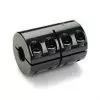
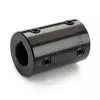
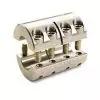
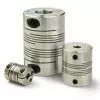
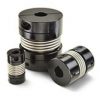
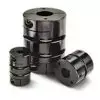
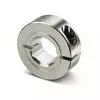
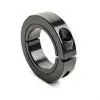
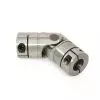
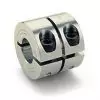 Short Rigid Couplings
Short Rigid Couplings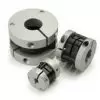 Controlflex Couplings
Controlflex Couplings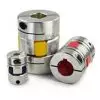 Jaw Couplings
Jaw Couplings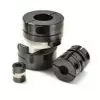 Oldham Couplings
Oldham Couplings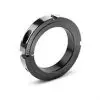 Bearing Locknuts – TCN
Bearing Locknuts – TCN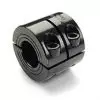 Double Wide Shaft Collars
Double Wide Shaft Collars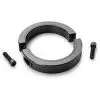 Heavy Duty Shaft Collars
Heavy Duty Shaft Collars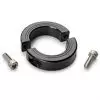 International Series Shaft Collars
International Series Shaft Collars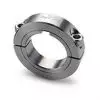 Keyed Shaft Collars
Keyed Shaft Collars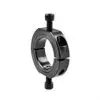 Mountable Shaft Collars
Mountable Shaft Collars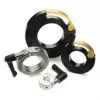 Quick Clamping Shaft Collars
Quick Clamping Shaft Collars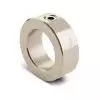 Set Screw Shaft Collars
Set Screw Shaft Collars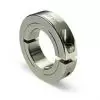 Thin Line Shaft Collars
Thin Line Shaft Collars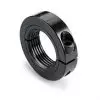 Threaded Shaft Collars – Pacific International Bearing Products
Threaded Shaft Collars – Pacific International Bearing Products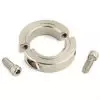 Two-Piece Shaft Collars
Two-Piece Shaft Collars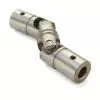 Friction Bearing Universal Joints
Friction Bearing Universal Joints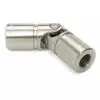 Needle Bearing Universal Joints
Needle Bearing Universal Joints

